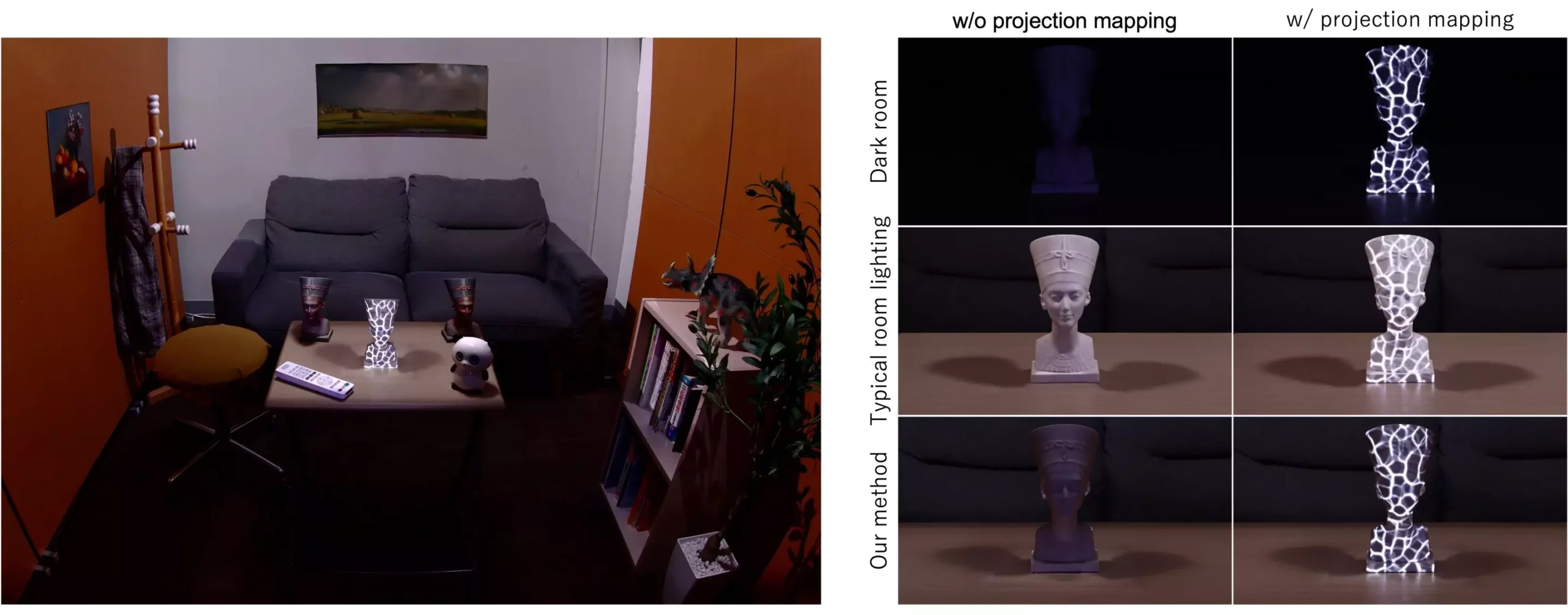The world of projection mapping has seen significant advancements in recent years, allowing for mesmerizing displays that transform ordinary objects into interactive canvases. However, a common limitation that has plagued existing systems is their reliance on darkness to achieve optimal results. The need for darkness stems from the fact that any surrounding illumination not only lights up the target object but also distorts the projected images, making black and dark colors appear overly bright. This constraint restricts the types of objects that can be effectively displayed using conventional projection mapping technology.
In a groundbreaking study published in IEEE Transactions on Visualization and Computer Graphics, researchers from Osaka University have proposed a novel approach to bring projection mapping “into the light.” Lead author, Masaki Takeuchi, highlights the innovative use of projectors to replicate normal illumination throughout the room, while keeping the target object in shadow. By creating the illusion of global illumination without actually using it, the researchers have opened up new possibilities for projection mapping in well-lit environments.
The research team’s methodology involves using a combination of standard projectors to illuminate the room, alongside a specialized projector with a wide aperture and large-format lens to soften shadow edges. These luminaire projectors cast light on the surrounding environment, allowing conventional texture projectors to map textures onto the shadowed surface of the target object. This unique approach not only eliminates the glowing effect typically associated with projected images but also enhances the realism of the displayed textures.
One key aspect explored by the researchers was how humans perceive objects in the newly introduced aperture-color mode versus surface-color mode. By carefully considering these perceptual nuances, the research team aimed to create more realistic environments that accurately replicate natural lighting conditions. The results of their study demonstrated the effectiveness of their method in projecting texture images onto objects without unnatural glowing effects, thereby enhancing the overall visual experience for viewers.
Looking ahead, the researchers plan to further refine their approach by incorporating additional projectors to manage complex illumination in proximity to the display object. Their ultimate goal is to create scenes that seamlessly blend into real-world three-dimensional environments, enabling interactive visual design experiences for industrial products and packaging. By fostering a setting where participants can interact with designs under natural light and with one another, the researchers envision a future where communication is enhanced, and design performance is optimized through immersive projection mapping technologies.


Leave a Reply